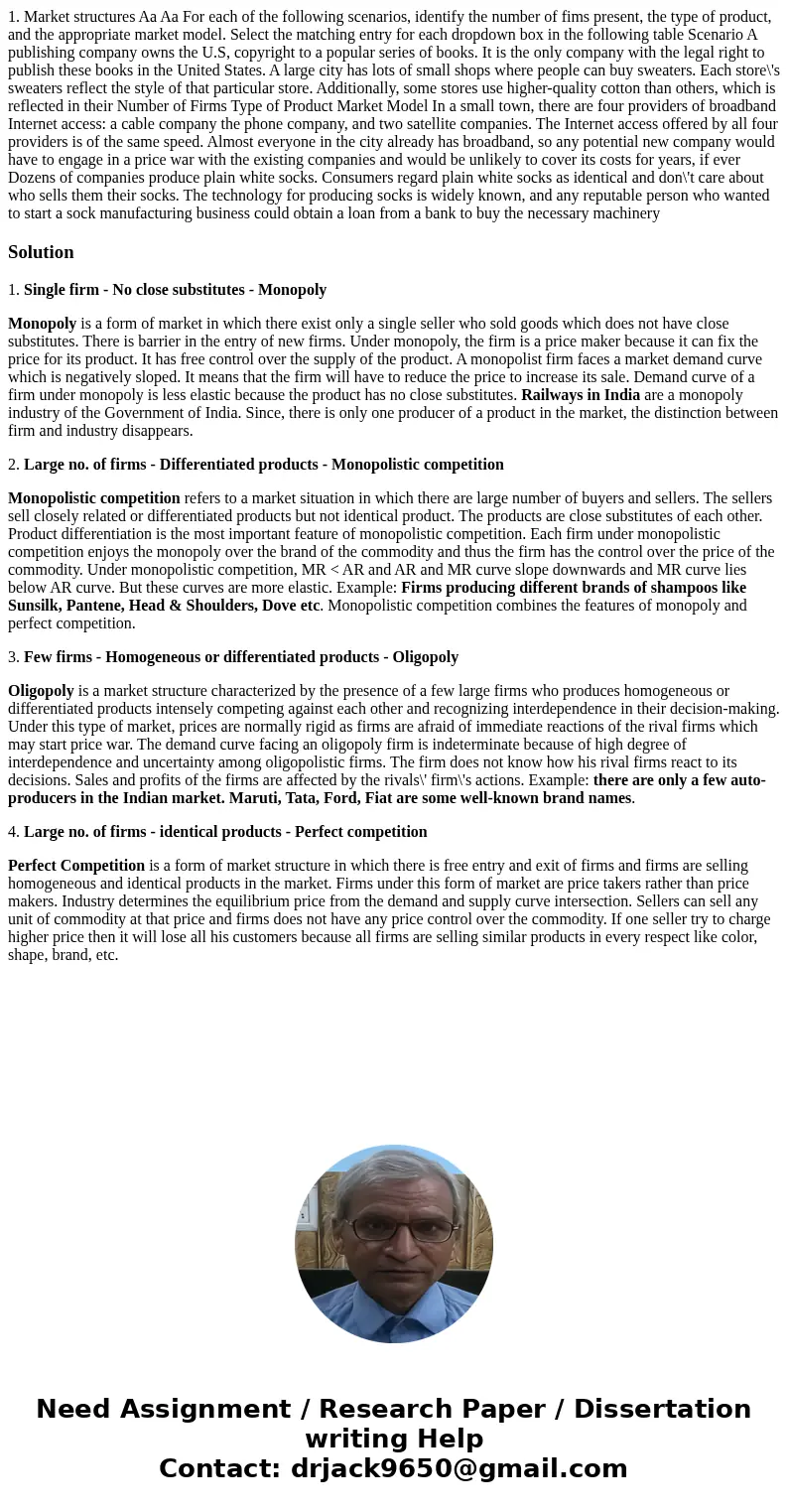1 Market structures Aa Aa For each of the following scenario
Solution
1. Single firm - No close substitutes - Monopoly
Monopoly is a form of market in which there exist only a single seller who sold goods which does not have close substitutes. There is barrier in the entry of new firms. Under monopoly, the firm is a price maker because it can fix the price for its product. It has free control over the supply of the product. A monopolist firm faces a market demand curve which is negatively sloped. It means that the firm will have to reduce the price to increase its sale. Demand curve of a firm under monopoly is less elastic because the product has no close substitutes. Railways in India are a monopoly industry of the Government of India. Since, there is only one producer of a product in the market, the distinction between firm and industry disappears.
2. Large no. of firms - Differentiated products - Monopolistic competition
Monopolistic competition refers to a market situation in which there are large number of buyers and sellers. The sellers sell closely related or differentiated products but not identical product. The products are close substitutes of each other. Product differentiation is the most important feature of monopolistic competition. Each firm under monopolistic competition enjoys the monopoly over the brand of the commodity and thus the firm has the control over the price of the commodity. Under monopolistic competition, MR < AR and AR and MR curve slope downwards and MR curve lies below AR curve. But these curves are more elastic. Example: Firms producing different brands of shampoos like Sunsilk, Pantene, Head & Shoulders, Dove etc. Monopolistic competition combines the features of monopoly and perfect competition.
3. Few firms - Homogeneous or differentiated products - Oligopoly
Oligopoly is a market structure characterized by the presence of a few large firms who produces homogeneous or differentiated products intensely competing against each other and recognizing interdependence in their decision-making. Under this type of market, prices are normally rigid as firms are afraid of immediate reactions of the rival firms which may start price war. The demand curve facing an oligopoly firm is indeterminate because of high degree of interdependence and uncertainty among oligopolistic firms. The firm does not know how his rival firms react to its decisions. Sales and profits of the firms are affected by the rivals\' firm\'s actions. Example: there are only a few auto-producers in the Indian market. Maruti, Tata, Ford, Fiat are some well-known brand names.
4. Large no. of firms - identical products - Perfect competition
Perfect Competition is a form of market structure in which there is free entry and exit of firms and firms are selling homogeneous and identical products in the market. Firms under this form of market are price takers rather than price makers. Industry determines the equilibrium price from the demand and supply curve intersection. Sellers can sell any unit of commodity at that price and firms does not have any price control over the commodity. If one seller try to charge higher price then it will lose all his customers because all firms are selling similar products in every respect like color, shape, brand, etc.

 Homework Sourse
Homework Sourse